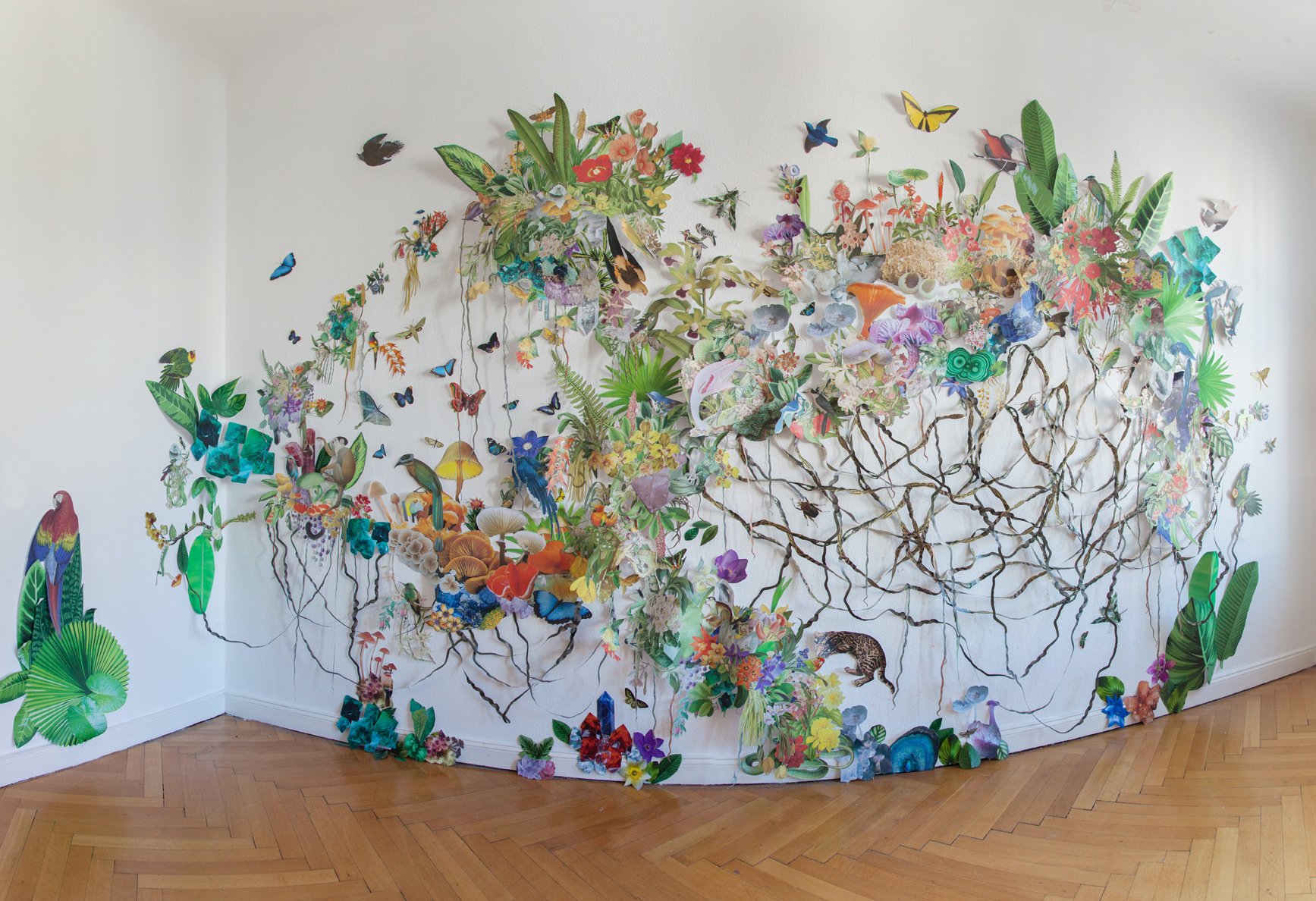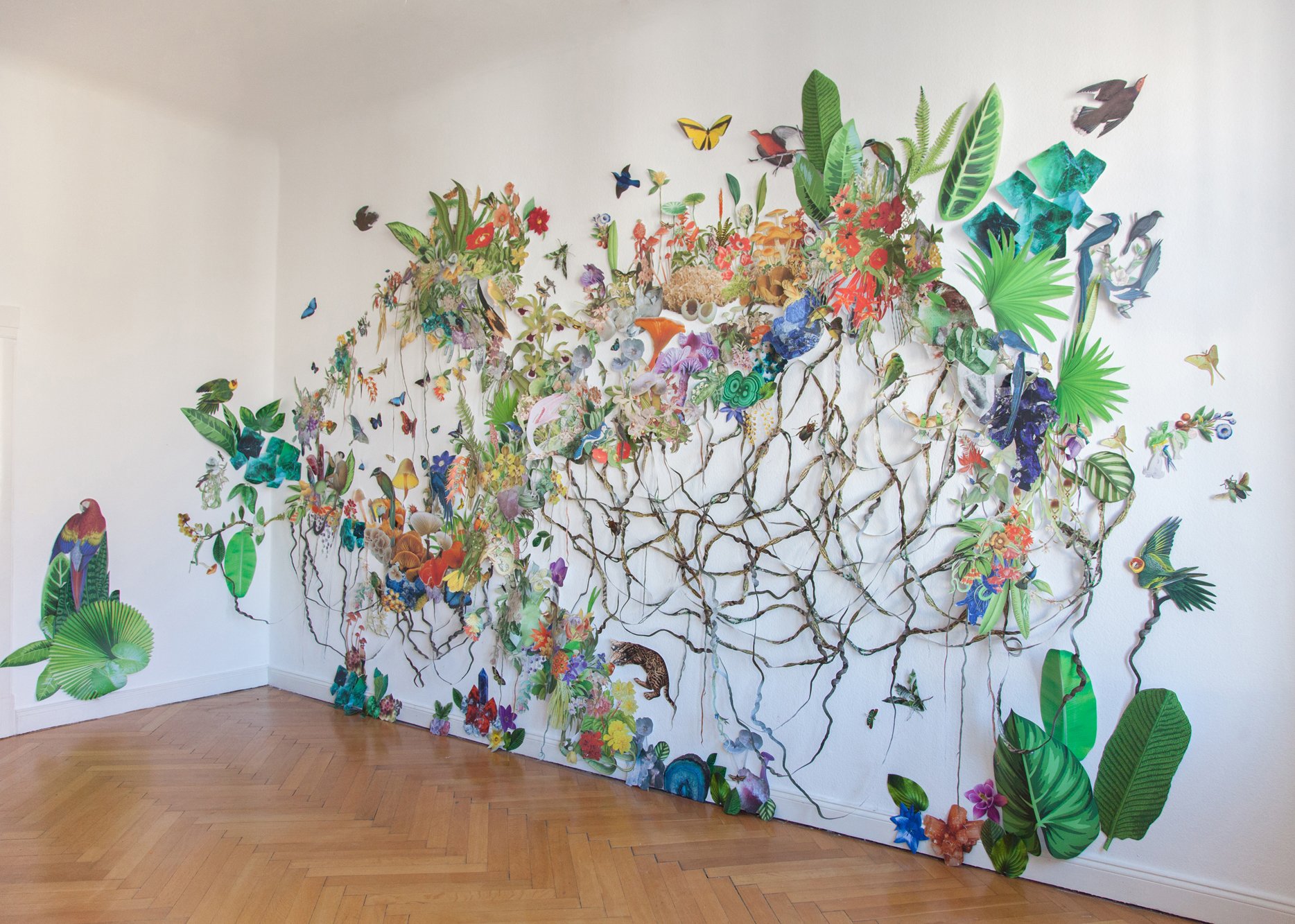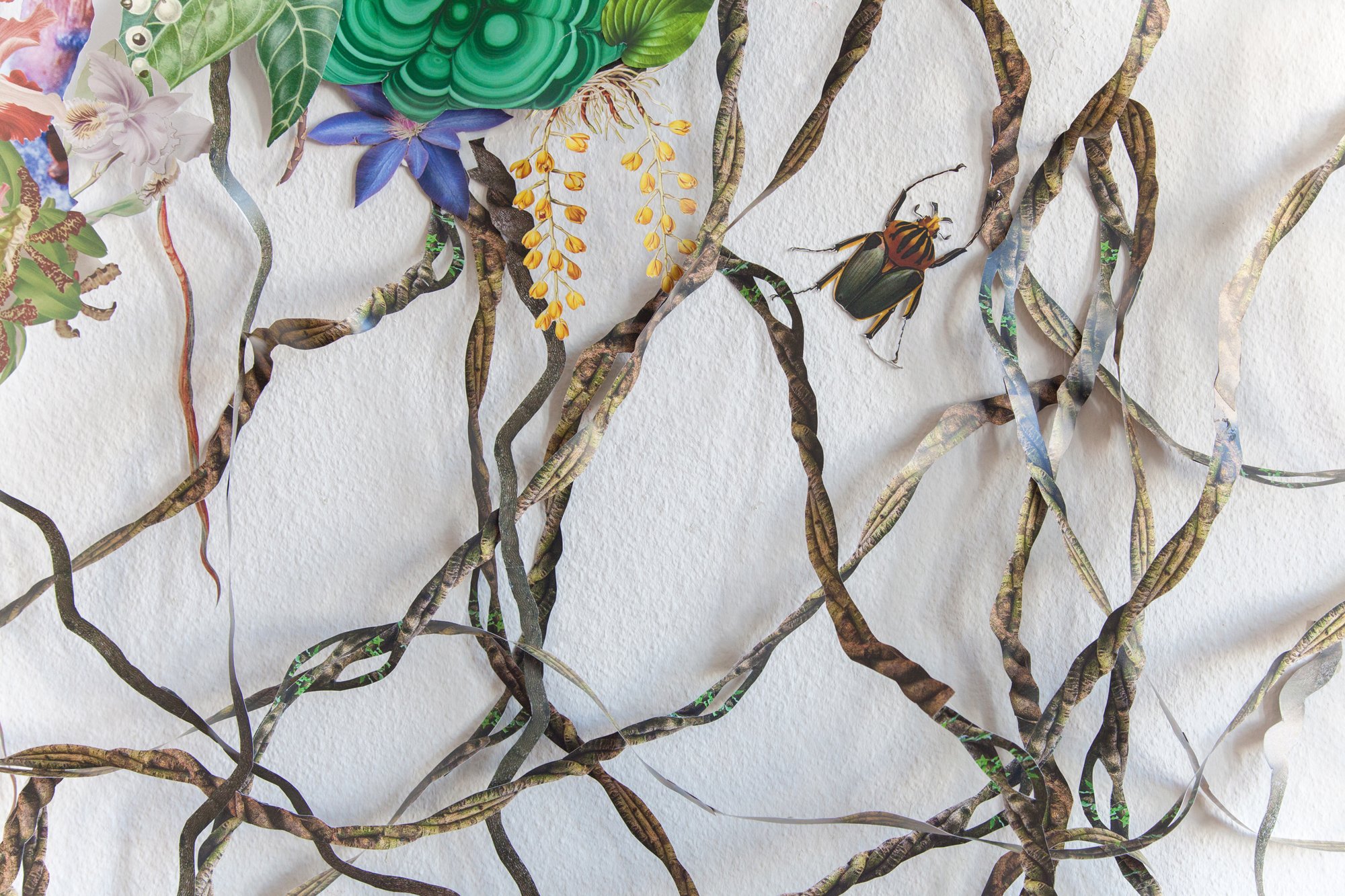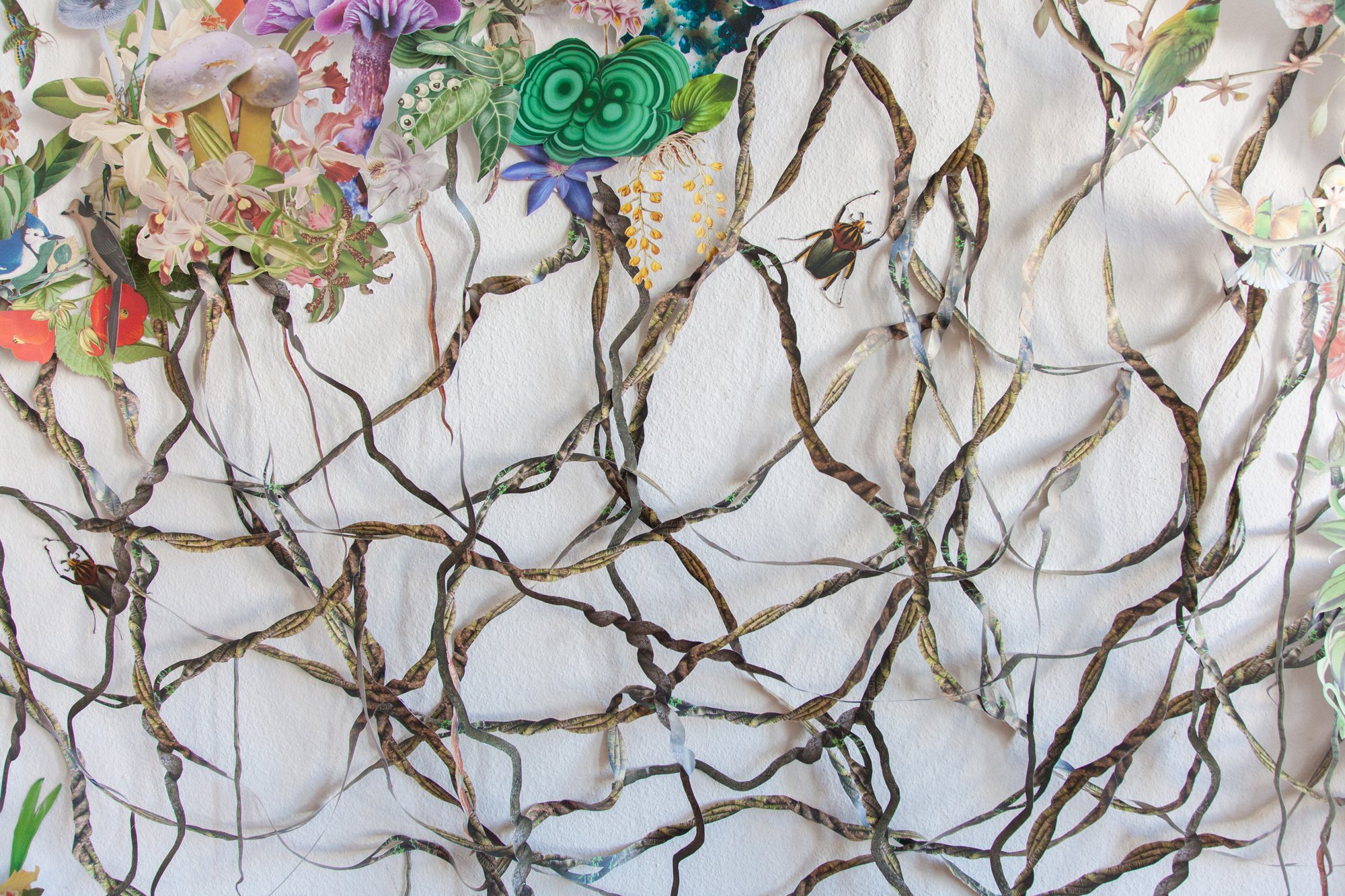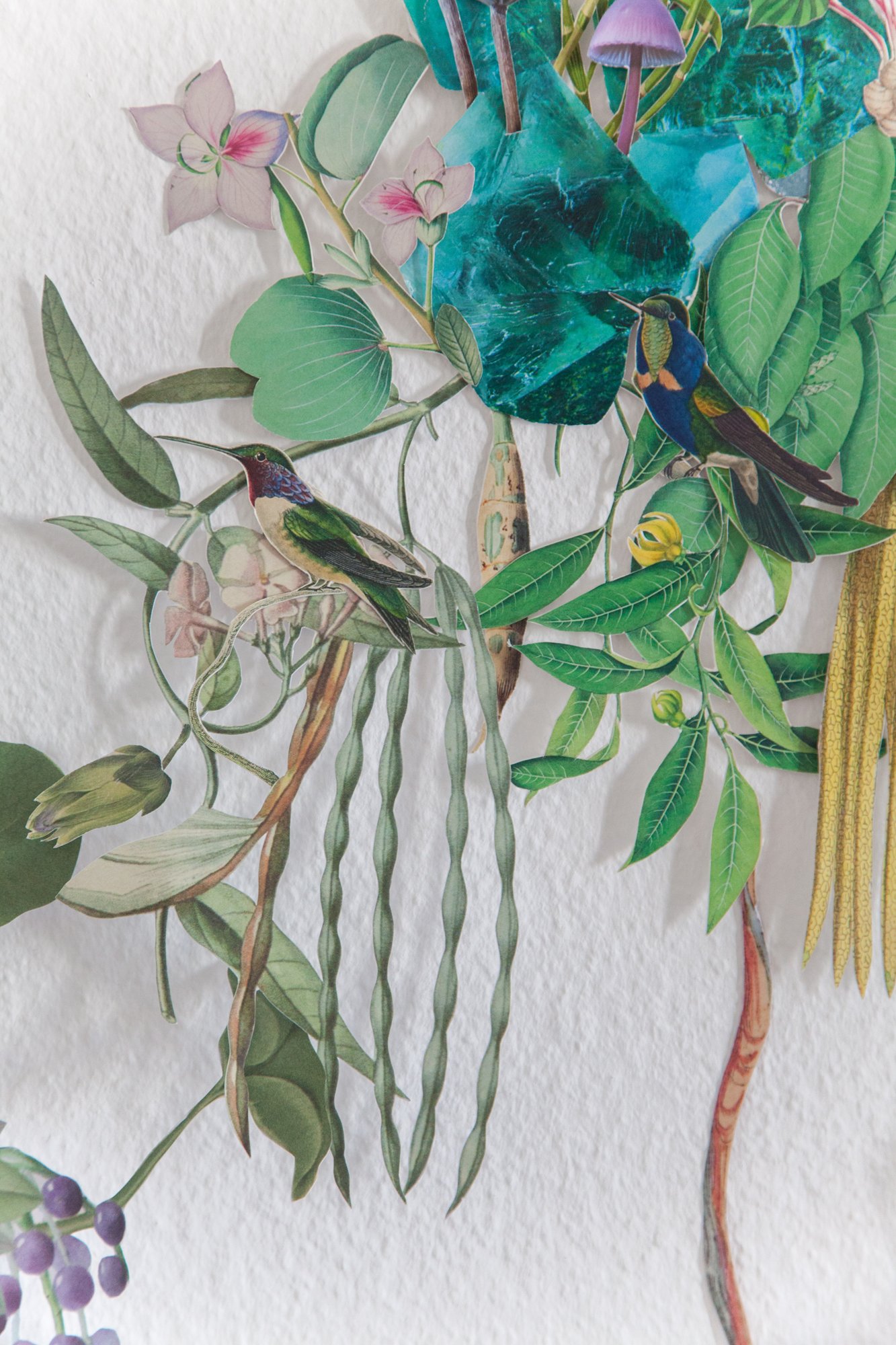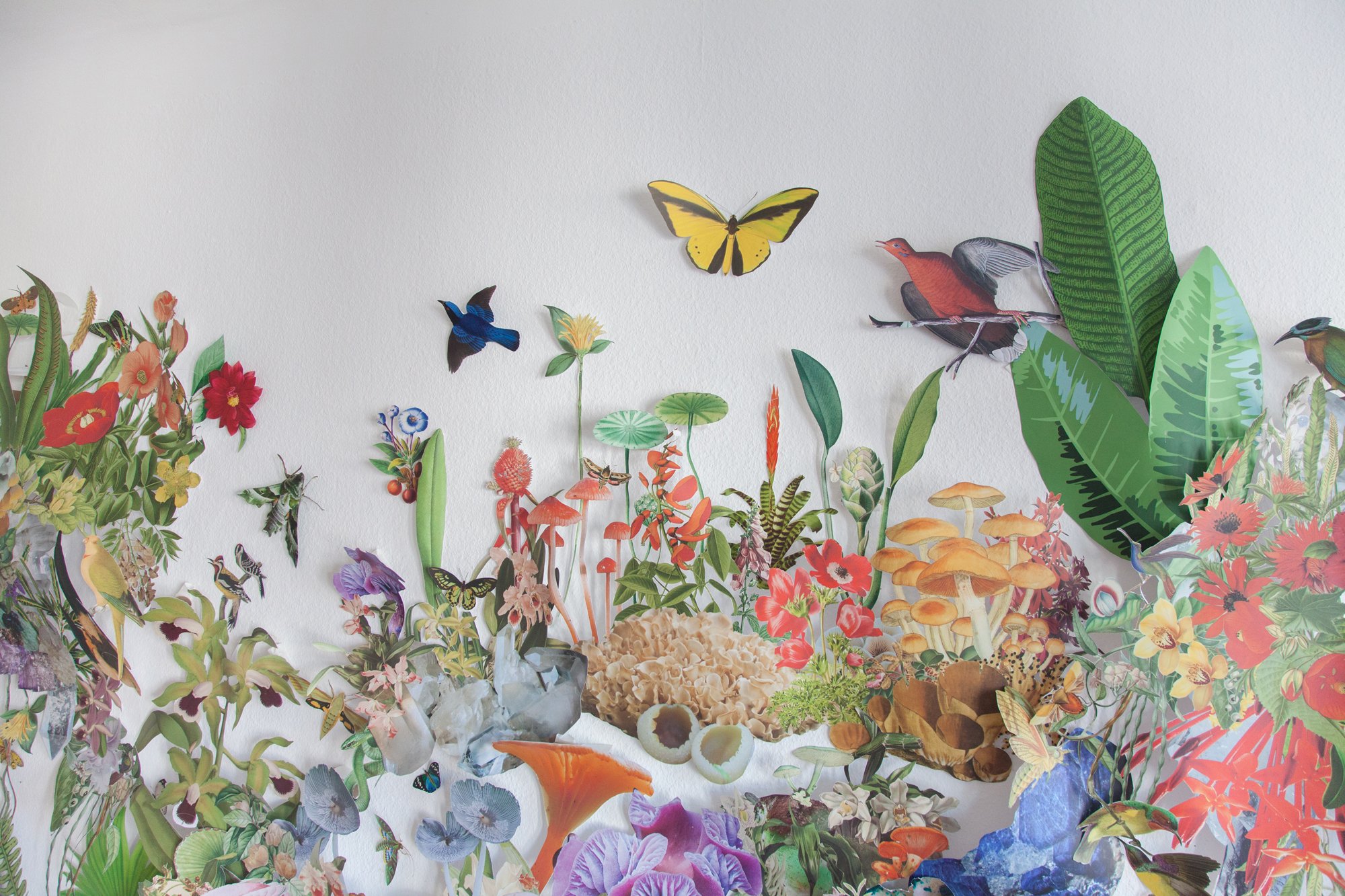Under garden, 2022
Inspired by mycelial networks and the vibrancy of subterranean ecosystems, my latest artwork Undergarden celebrates deep interconnectedness and entanglement in both nature and the climate movement.
In a time of planetary unraveling, the quiet observance of soil ecosystems offers lessons on patience, resilience, and community. When the crisis feels insurmountable and the timeline impossibly short, observing how fungi compost decay into new life may guide us towards transformative climate action. Both fungi and climate action must break down the old, even the toxic or degraded, to make way for the new. Nature always upcycles and so too must the climate movement: We work with the materials at hand, the ecological ruins of capitalism, to create something new.
Patience
The quiet work of a fallow field reminds us that times of rest and rehabilitation allow for future seasons of abundance. Likewise, it can be helpful to visualize the emerging climate space as not yet fully visible, but providing the groundwork for future healing, flourishing, and change. When the planetary crises feel intractable, mycelial networks become a helpful metaphor: To remember that both the climate movement and fungi are creating networks, sharing nourishment, and growing roots that will allow for flourishing in unexpected ways in the future.
The fungal world also asks us to look for experiences of time that lie outside of the linear model that capitalism has made dominant. Indigenous leader Kyle Whyte speaks of "relational time"- studying how relationships are built or destroyed over time. This view of the climate crisis draws us back to a deeper unraveling that began hundreds, perhaps thousands of years ago. When viewed through relational time, the fraying of our relationship with the natural world, between colonizer and colonized, and even between our minds and bodies all become essential to understanding our current unraveling. Tempering our urgency with an understanding of the root, relational, origins of the crisis will ensure our solutions address the causes and not simply the symptoms of the crisis.
Resilience
Soil ecosystems are resilient because of their diversity, and their life-giving abilities come from the interplay of billions of microscopic life forms. Likewise, our approach to solving the climate crisis must also be diverse, growing up from the groundwork across the globe in myriad forms. Indeed, our ability to address global warming hinges upon our ability to be both interconnected and unique—a tapestry of many threads that will allow for future planetary flourishing. Project Drawdown's expansive and diverse list of top climate solutions includes educating girls, peatland restoration, and a renewable energy transition. Like the soil, the climate movement will flourish to the extent that it is abundantly diverse, in symbiosis with itself, and interconnected.
A handful of soil contains millions of lifeforms. When it comes to our place within life, we either thrive together or unravel together. Therefore, there can be no "silver bullet" solution to the crisis. Instead, many different solutions come together into something more significant than the sum of its parts. A pluralism is required, an ecosystem, a community.
Community
Nature's bounty is born forth from vast networks and symbioses. From the deep entanglement of algae and cyanobacteria in lichen to the mycorrhizal partnerships that form "the wood-wide-web," nature is built upon relationships. Like the flourishing of life in a forest, the work of the climate movement will mirror the quality of the relationships we are making in this early phase. Working from a space of mutualism and symbiosis is essential to climate success and our planet's healing. The logic of capitalist competition with its myopic timelines does not belong in our movement. We must look elsewhere for lessons on how to thrive in a planetary community. Capitalism is a tired story, and we need new metaphors for a new age. Let us instead look to a forest bed, to a mycelial web, to a regenerative farm's abundance for our lessons. There is an abundance to be found in the collaborative, multi-solving, composting, generative ways of our subterranean ecosystems.

